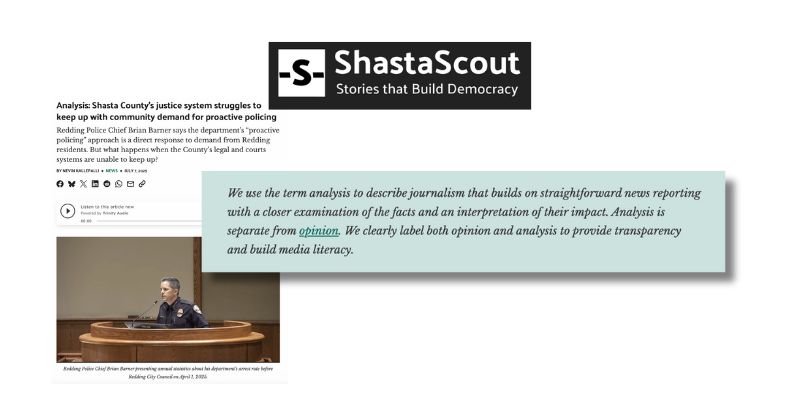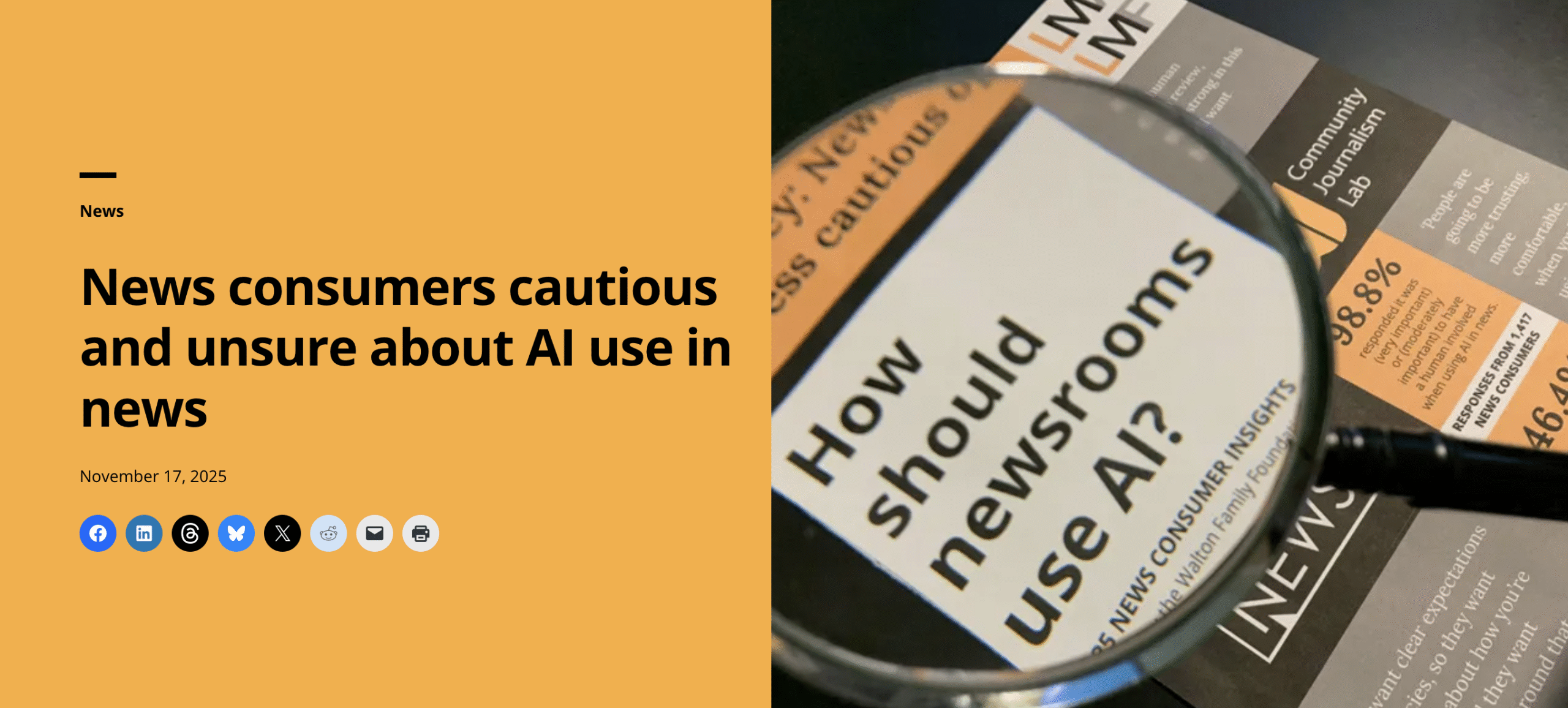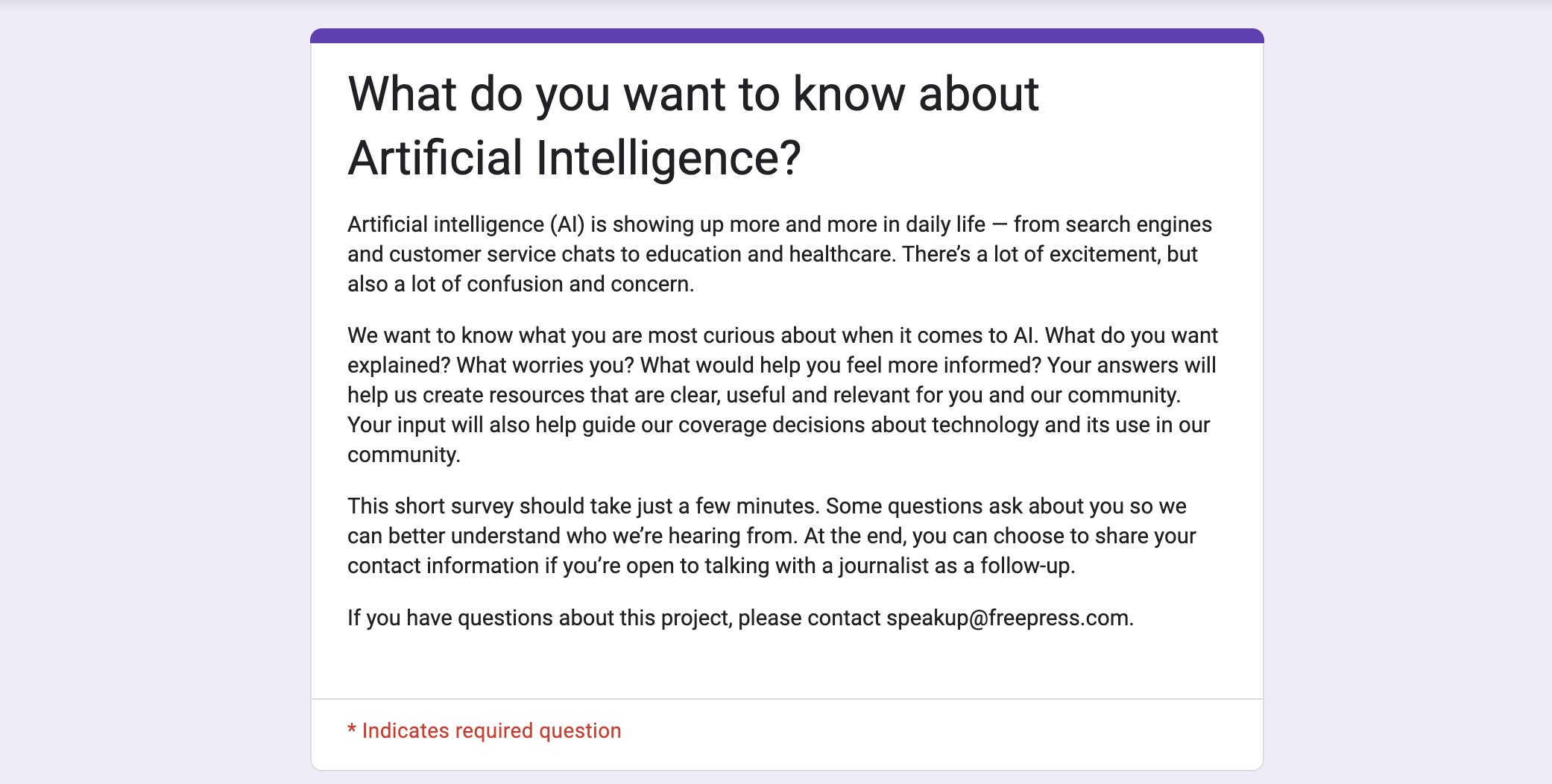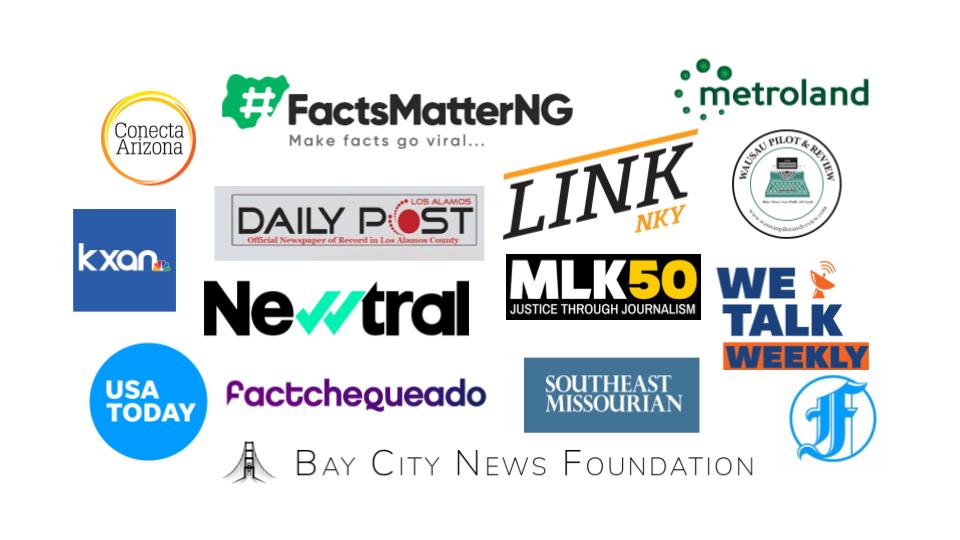
If you’re changing your practices around anonymity and the use of unnamed sources, now is the time to share that decision-making with your audience.
If you’re changing practices around naming sources, tell your audience
We’re hearing from journalists who say it’s becoming harder to get sources — especially government employees, undocumented individuals and others in vulnerable positions — to go on the record. People are increasingly afraid to talk and worried about retaliation, job security, safety or legal risk.
If you’re changing your practices around anonymity and the use of unnamed sources, now is the time to share that decision-making with your audience.
Your audience deserves to understand your mindset shift, and sharing these explanations can prevent assumptions from being made. We know when news consumers see inconsistency in how we do things, they make an assumption about our reasons, and often that assumption leads to accusations of bias or having an agenda.
To help prevent that from happening, don’t just note “anonymous source” and move on. Explain why you grant anonymity and what guardrails you have in place to ensure accuracy and credibility.
Here’s how some newsrooms are doing this
In this letter at NOLA.com, editor Arnessa Garrett acknowledges the tension: Anonymity can be controversial, but it can also be essential to obtain information and stories for the public. The more your audience sees your newsroom wrestling with that responsibly, the more likely they are to trust your decisions and not make their own assumptions.

In his newsletter The Nutgraf, Chatwan Mongkol recently shared how three college newsrooms were updating their anonymity and story removal policies.
- In a Letter from the Editor post, The Huntington News explains they have received more requests than usual for anonymity and because of their school’s large international student population, they are updating their anonymity policy. One change they are making is expanding “anonymity to international students quoted in news articles speaking out against the federal government. This will also be extended to those with family members who are not U.S. citizens and fear for their safety and security.”
- In an Editorial The Northern Star explains that their policy on how they cover undocumented and international students won’t change. They then explained different aspects of their policies around anonymity while explaining an element of the First Amendment and the Society of Professional Journalists Code of Ethics. The newsroom said, “When covering protests centered around international students, the Northern Star will do all it can to avoid publishing any photos that show closeups of faces, for fear that an international student or faculty member may be pictured and put at risk.”
- The Middlebury Campus said it had received questions about its process for granting anonymity and removing content after publication. In the post, they explain, “Our process to each request is a case-by-case approach. We evaluate every person’s unique circumstances to see how we can best preserve a story’s integrity without endangering people in our community.”
Writing a “Letter from the Editor” post about a policy change like this can be a good first step. But, what’s most important is for news consumers to learn about the policy and your approach when it applies.
That means getting the messages inside stories where anonymity has been granted.
Copy this transparency language
Need a place to start? Below are a couple of ways to quickly add transparency within stories with some sample language you can copy and paste.
Note: While “anonymous” is the most common term used to describe a source whose name isn’t used, some newsrooms used “unnamed.” That encompasses a reminder that the source is not anonymous to the journalists, but the journalists are choosing not to publish the name. Read more about how to bring clarity to your use of anonymous sources here.
In an editor’s note:
- “Our newsroom has updated our sourcing policy due to an increase in threats and retaliation against public employees who speak to journalists. In this story you will hear from one of those employees. Learn more about how we decide to allow the source to remain unnamed, why and our fact-checking process we follow when doing so.”
- “We’ve updated our sourcing practices in response to increased threats and retaliation faced by immigrants. In this story, you’ll hear from someone directly affected. After careful consideration, we granted them anonymity. Learn more about how we make that decision and the fact-checking we conduct to ensure accuracy.”
- “Due to increased threats and online harassment, we’ve revised our sourcing policy to better protect students who speak to us. In this story, we’ve allowed one such student to remain unnamed. Learn how we make these decisions and how we verified their story.”
Inside the story after quoting individual:
- “We granted this person anonymity because they fear losing their job for speaking out.”
- “To prevent possible professional retaliation, we’ve allowed this source to remain unnamed.”
- “Because they feared repercussions at work, we allowed this source to speak anonymously.”
- “Anonymity is rare in our reporting. But in this instance, it was necessary to protect the speaker while exposing an issue of public interest.”
Other spots:
These messages can also be added to shaded or expandable boxes inside stories, shared on social media and added to newsletters and on-air content. Check out this worksheet for more examples of what sharing transparency elements can look like.
At Trusting News, we learn how people decide what news to trust and turn that knowledge into actionable strategies for journalists. We train and empower journalists to take responsibility for demonstrating credibility and actively earning trust through transparency and engagement. Learn more about our work, vision and team. Subscribe to our Trust Tips newsletter. Follow us on Twitter and LinkedIn.

Assistant director Lynn Walsh (she/her) is an Emmy award-winning journalist who has worked in investigative journalism at the national level and locally in California, Ohio, Texas and Florida. She is the former Ethics Chair for the Society of Professional Journalists and a past national president for the organization. Based in San Diego, Lynn is also an adjunct professor and freelance journalist. She can be reached at lynn@TrustingNews.org and on Twitter @lwalsh.



